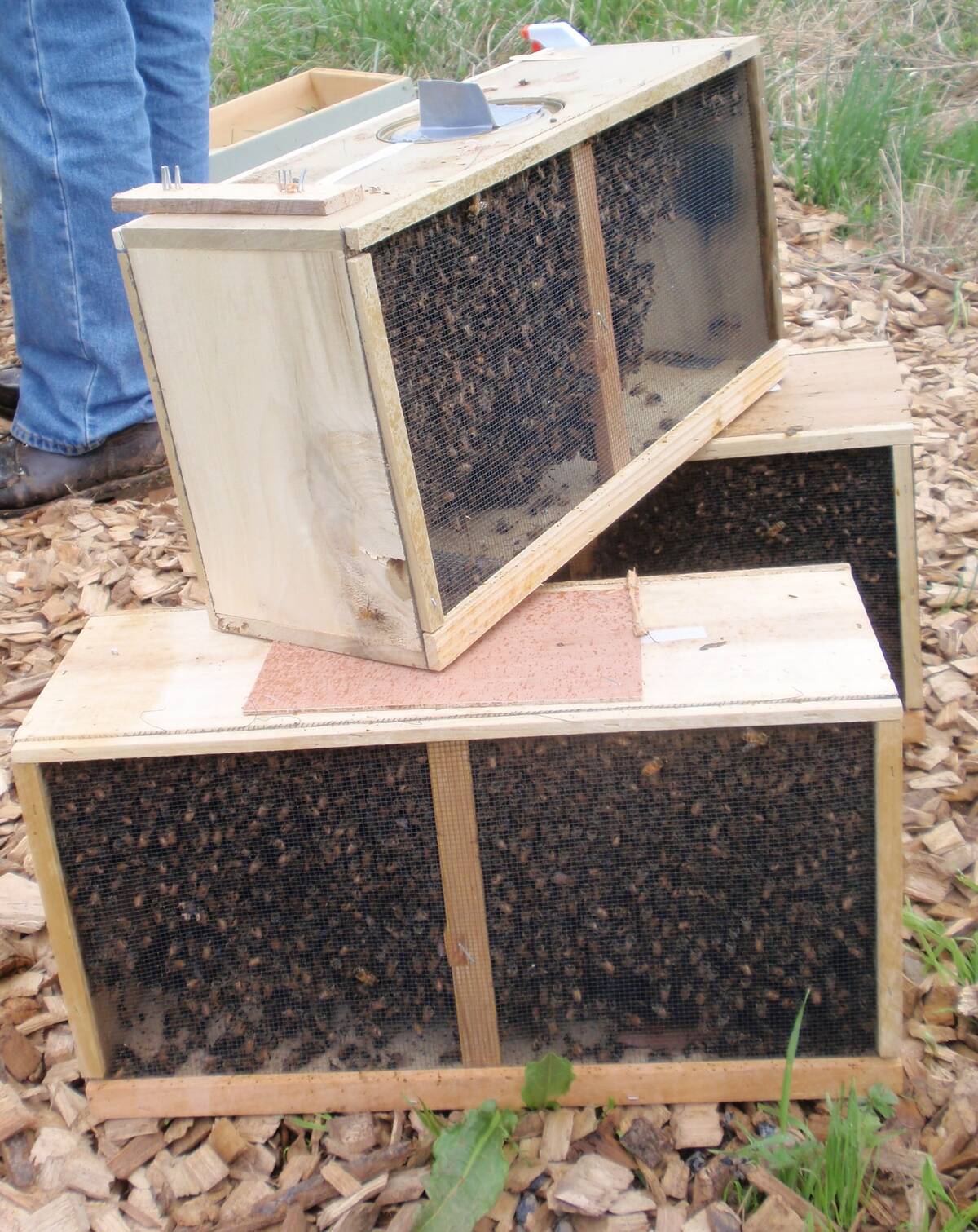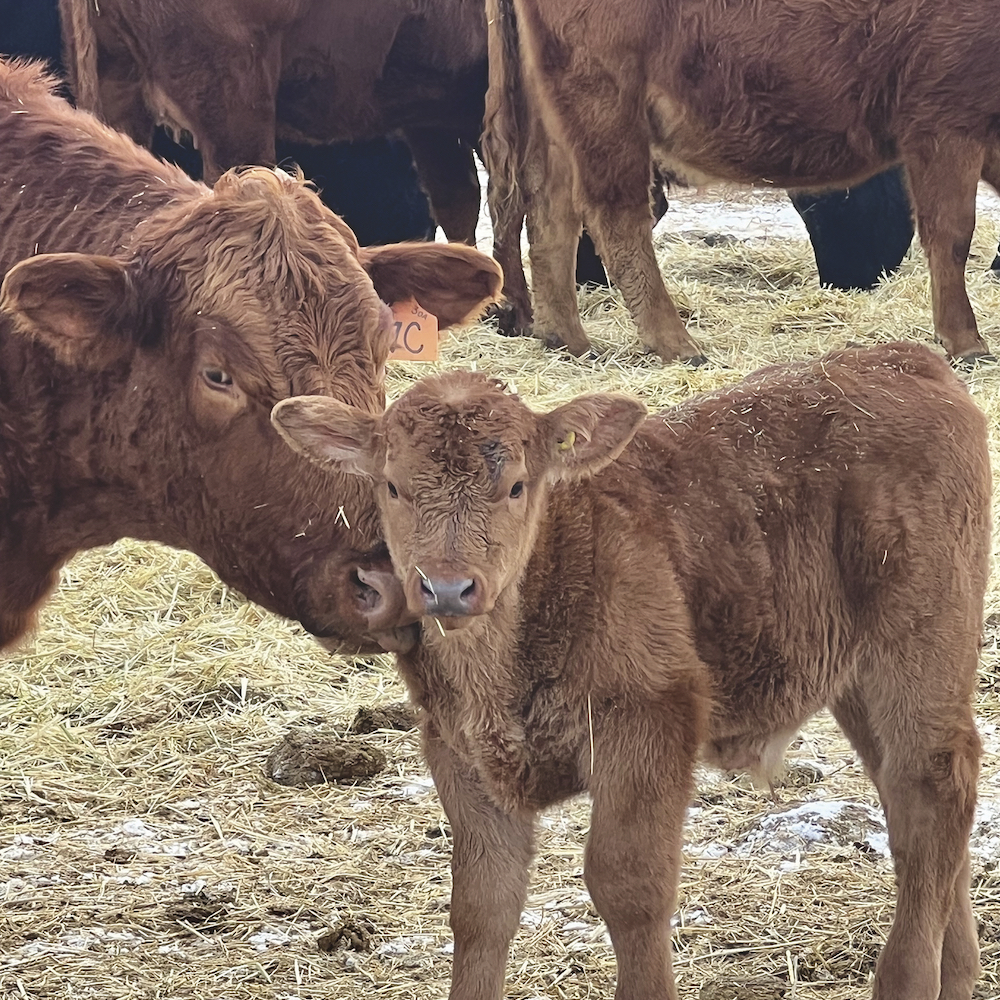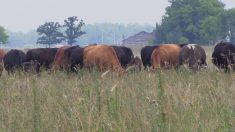Glacier FarmMedia – Feeding pregnant cows at night may increase the chances that they will conveniently calve in daytime.
“I think there could be some merit,” said Dr. Cody Creelman. “I’ve had several clients over the years try it. Several have thought it’s perhaps a good feeding method and they think that it does have the desired effect.”
While not having to get up in the middle of a bitterly cold night has obvious appeal, nighttime feeding can quickly become tiresome, said the veterinarian.
Read Also

Canadian beekeepers call for regulatory accountability
Beekeepers say the Canadian Food Inspection Agency should restore packaged U.S. bee shipments, claiming the agency isn’t following evidence.
“It seems like most people just end up going back to standard feeding practices, probably mostly because of logistics,” he said.
However, cattle producers can rest assured there’s no harm in the practice, said Creelman.
“I’ve heard some people argue against it but I haven’t really put stock in it being harmful. Every once in a while, we come across someone passionately arguing for or against but I don’t think any of those arguments for or against really hold up.”
The method has a made-on-the-Prairies origin story as well as its own name: The Konefal Method.
Gus Konefal was a Manitoba rancher who, in the 1970s, discovered that 80 per cent of his cows calved between 7 a.m. and 7 p.m. when fed later in the day — a first feeding at 11 a.m. to noon with a second feeding between 9:30 and 10 p.m.
Reasons aren’t really known, but one theory is that the feeding method produces a hormonal effect that puts pressure on the cow’s rumen.
An Iowa State study found some success using a variation of the method, with 82 per cent of cows calving between 6 a.m. and 10 p.m. when fed once a day at 4 p.m. Ninety per cent of the heifers in a control group also calved within the same time frame.
Another survey of 15 cattle producers in Iowa and Missouri found that feeding pregnant cows once daily between 5 and 10 p.m. resulted in 85 per cent of them calving between 5 a.m. and midnight. (It was 50/50 for cows not on that system.)
It’s not clear if randomized, double-blind clinical controls were employed but calving doesn’t exactly lend itself to robust research, said Creelman.
“That can be really, really difficult to do in a biological system at calving season,” he said. “There’s so much herd-to-herd variation, it’s very hard for researchers to control. It’s probably one of those things that anecdotal data could prove but proving it scientifically is probably hard.”
It doesn’t help that the idea has gained some urban legend (or more accurately, rural legend) status.
“I’ve heard some people talk about some of the other, potentially extrapolated evidence (such as) if you feed a cow at night and it’s cold, that rumination causes a lot of heat to develop so potentially you’re having a cow that could be a little more weather resistant on the coldest nights of the year,” said Creelman.
“But I don’t think that it gets that cold that often over most of Canada during the wintertime for that to be too much of a factor.”

Nanita Blomquist said she’s used the Konefal Method with some success.
“It’s something we’ve used from time to time,” said the cattle producer from Big Valley, Alta. “We’ve found it’s made a difference for us sometimes — I would say 75, 80 per cent of the time. We don’t necessarily do it on the purebred side of things but we do it in our commercial side.”
It’s a decision the Blomquists make on a season by season basis.
“It’s something that definitely affects how busy we are and different things in our lives so (it depends on) whether it fits in with that or not,” she said.
“It’s not something we do year after year because it doesn’t always work. Sometimes it works for us and sometimes it doesn’t.”
Jay Hager, who runs a cow-calf operation near Provost, Alta. has never fed his cattle at night and doesn’t plan to start.
“I get my butt out of bed in the morning and feed mine. If I ever break down or anything like that, I can still get my chores done in the daylight,” he said.
“I don’t want to start feeding right before dark. I don’t know if they calve better in the day if you feed them at night. I just like to get my stuff done and not have to worry about it, basically.”
There are tips available for cattle producers interested in trying the Konefal Method.
Iowa State advises staying as close to the same feeding schedule and amount as possible each day. Deviating more than 15 minutes or providing too much feed will yield less desirable results. The method may be most effective when started one month prior to calving.
South Dakota State University suggests these efforts pay off in the long run and that a first-calf heifer that calves during the day will tend to continue doing so for the remainder of her productive years.
– This article was originally published at Alberta Farmer Express.
















